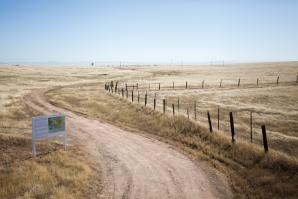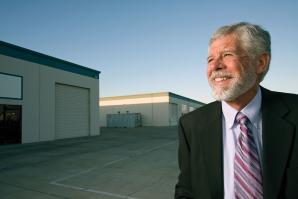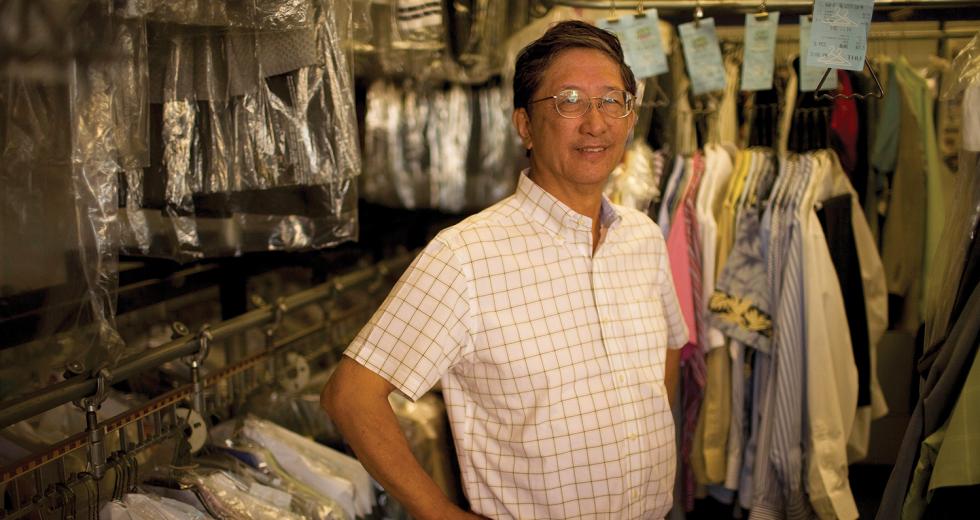Like many of the hundreds of Rancho Cordova business people going about their daily routines, Kyle Lam wasn’t aware the city was looking for the wispy trails of toxic waste dumped long ago.
The city, which has a well-documented industrial legacy, received two coveted grants from the U.S. Environmental Protection Agency last year to identify brownfields, which are abandoned or underused industrial and commercial properties where redevelopment may be stalled because of environmental contamination.
The two grants, totaling $400,000 over three years, will be used to identify and revitalize sites in the south Sunrise and Folsom boulevard corridors, says Curt Haven, the city’s economic development director.
“The funding will allow us to identify brownfield sites, so they can be cleaned up,” Haven says. “This will enable more development opportunities for both the public and private sectors.”
There are an estimated 15 hazardous substance sites and 44 petroleum release sites in the 6,445 acres in the city.
“I guess if they got the grant, they should go for it,” says Lam, owner of Leibel’s Cleaners & Tailors on Olson Drive in the city’s brownfields recovery area. He knows about Rancho Cordova’s history of soil contamination but is not confident the effort will produce any results.
Lam recalls a gas station operated where a bank branch was subsequently built on Folsom Boulevard, just one of many areas where former toxic uses might have tainted the soil.
“But the land is used again, the waste disappears and the people forget,” says Lam, who has owned the dry cleaning shop for 20 years. “It seems like they are chasing ghosts.”
City and federal officials, along with developers and businesses waiting for veins of rich construction opportunities, think it’s worth the chase.
“This will help with future development,” says Megan Hoffman, economic development specialist for the city of Rancho Cordova. She says revitalization efforts and redevelopment, especially the building of the 12-acre Mills Station Crossing project, could be delayed by environmental concerns.
“Environmental justice is also a component that plays into this,” Hoffman says. “We need to make sure the people who live here today have access to clean air and water.”
She says it’s possible the city will root out contamination on some sites. Rancho Cordova sits between the Aerojet campus and the former Mather Air Force Base, both identified as federal Superfund cleanup sites.
The historic uses of Folsom Boulevard are also a giveaway that soil contamination may be lurking.
“Folsom Boulevard used to be Highway 50, so there were many service and gas stations, dry cleaners, auto dismantlers, auto repair shops and oil recyclers,” Hoffman says. “It was primarily highway commercial uses.”
The first grant of $200,000 will be used to establish an inventory of sites, conduct environmental site assessment and support community outreach activities. The second round of funding will focus on sites with potential petroleum contamination.
Once the contamination is identified, the city will go for more grant money to clean up the sites, Hoffman says, so they can be developed and put back into use. Unfortunately, some of the developments are relying on redevelopment funds from the state, the future of which is currently murky at best.
“State redevelopment money is in question right now, but this grant helps us leverage funds from the redevelopment agency down the road,” she says.
Mills Station Crossing, a mixed-use, transit-oriented project along Folsom Boulevard, is one of the projects awaiting assessment, possible cleanup and redevelopment. The city will spend $50,000 to $60,000 on brownfields assessment in the project area.
It would have retail and housing, adjacent to a Los Rios Community College District satellite campus. It is planned for the north side of the boulevard between La Loma Drive and Paseo Drive, across the street from the Mather Field-Mills light-rail station.
This is the first time Rancho Cordova has applied for grants after incorporating in 2003 and forming its redevelopment agency in 2006.
Currently, the property has some vacant buildings, a taco shop, home improvement store, car wash and check-cashing service. The city is in eminent domain proceedings with one landowner. It is hoped the project will turn a dowdy, underused commercial section into a vibrant neighborhood for retail, residential and office areas, all about a quarter-mile from the Highway 50 interchange.
With state redevelopment money in limbo, the city is moving forward with brownfields assessment as cleanup will be required in most cases, no matter what the new use for infill will look like.
“We’re going ahead with brownfields assessment because we need to know of possible contamination in case a private developer comes along and wants to build,” Hoffman says.
Already, the city is assessing potential contamination at a former gas station site at Folsom Boulevard and Mather Field Road. It’s possible old underground gas tanks are still buried there, and soil samples will be used to determine whether it can be cleaned and how to do it.
This is the first time Rancho Cordova has applied for grants after incorporating in 2003 and forming its redevelopment agency in 2006. But many other communities and cities in the Sacramento region have benefited from the grants, which the EPA created in 2002 under the Small Business Liability Relief and Brownfields Revitalization Act, which was passed to help states and communities clean up and revitalize brownfields to spur infill development.
Rancho Cordova officials were inspired to go after grants after West Sacramento and Sacramento successfully landed funding in recent years.
Diana Sasser, brownfields project manager for Sacramento, says the city has three different grants from the EPA: a revolving loan fund of $1 million to clean up sites for developers of nonprofits, a $250,000 grant to the redevelopment agency for cleanup of lead and asbestos abatement in the 800 block of K and L streets and $400,000 in grant money for site assessments in South Sacramento.
“These grants are really important, especially since people want to do more infill development, and we’re going to deal with more brownfields in the process,” Sasser says. “It’s hard for developers to bear the burden of cleanup, so the grants for assessment, cleanup and low-interest loans are vital.”
Wallace Woo, brownfields coordinator for the EPA’s regional office in San Francisco, says Rancho Cordova competed against communities nationwide for $89 million in funding in 2010. He says about one in four applicants gets an award.
He says assessed land could be idle or developed but downgraded in value during a sales transaction.
“For many of these properties, it’s tough to move them because there’s a fear of liability or that they will be too costly to develop,” Woo says. “The cities asked for a program to assess and clean up sites, get the infrastructure in, so they could start getting the tax base back. This solves some of the pollution problems and helps communities become healthier economically.”
The grants are a boon to the economy in Rancho Cordova, according to the city’s chamber of commerce, which has been working to revitalize the Folsom Boulevard corridor for years.
“These are distressed properties along that boulevard, and anything that can give it new life or a facelift will be a big help,” says Tim Murphy, a chamber board member and director of public affairs for Aerojet. “This is something we’ve been hoping for since the late 1990s.”
Recommended For You

Neighborhood Watch
A planned development near Rancho Cordova is sparking intense debate
Infill or outpost? Sprawl or smart planning? How some people view the Cordova Hills development proposed for southern Sacramento County may depend on which end of Highway 50 they’re looking from.

Civil Union
Rancho Cordova welcomes annexed land
Rancho Cordova recently celebrated the annexation of a finger of land — Folsom Boulevard east of Sunrise Boulevard and south of Highway 50 — with the rest of the incorporated city.



